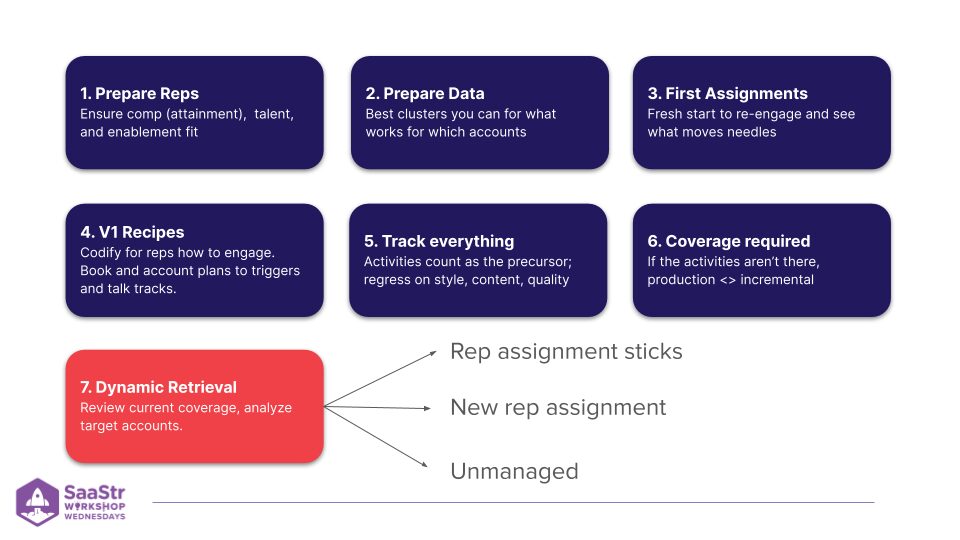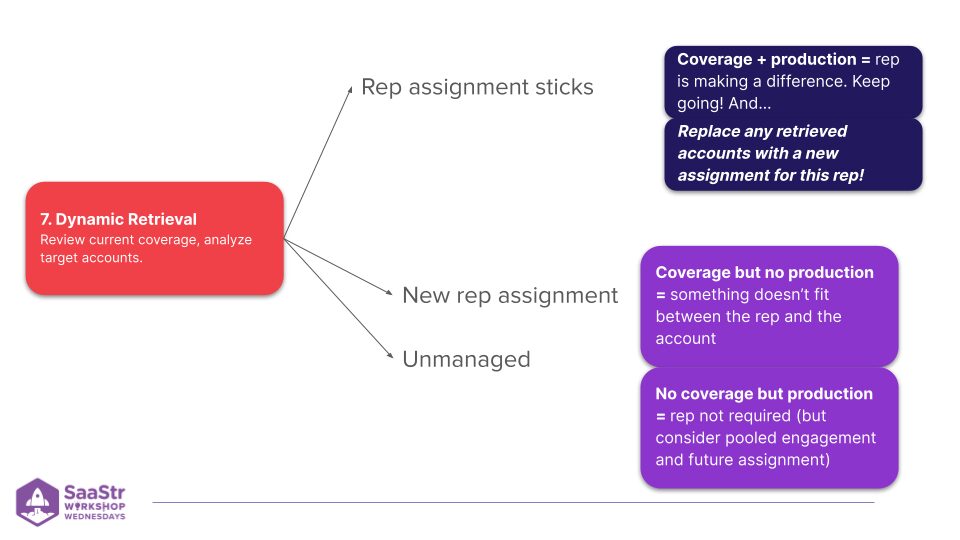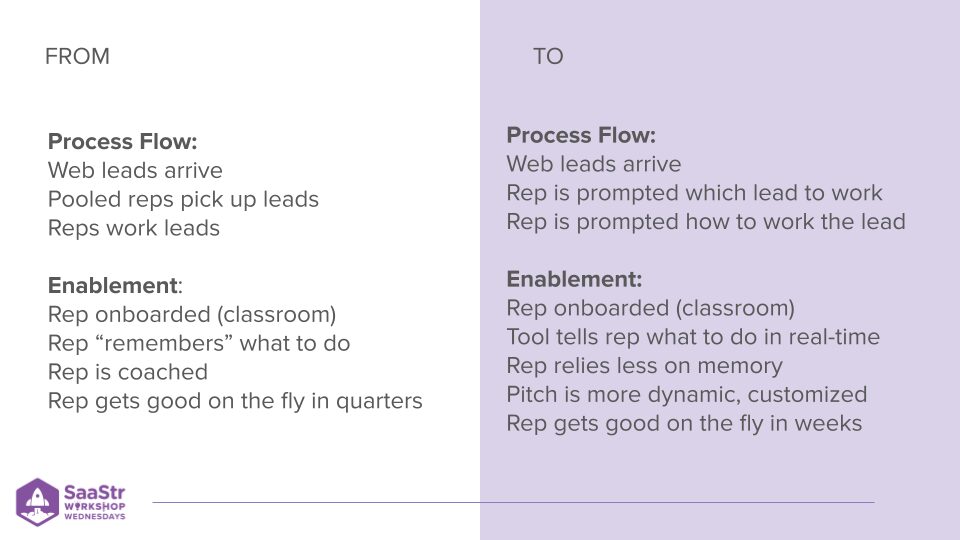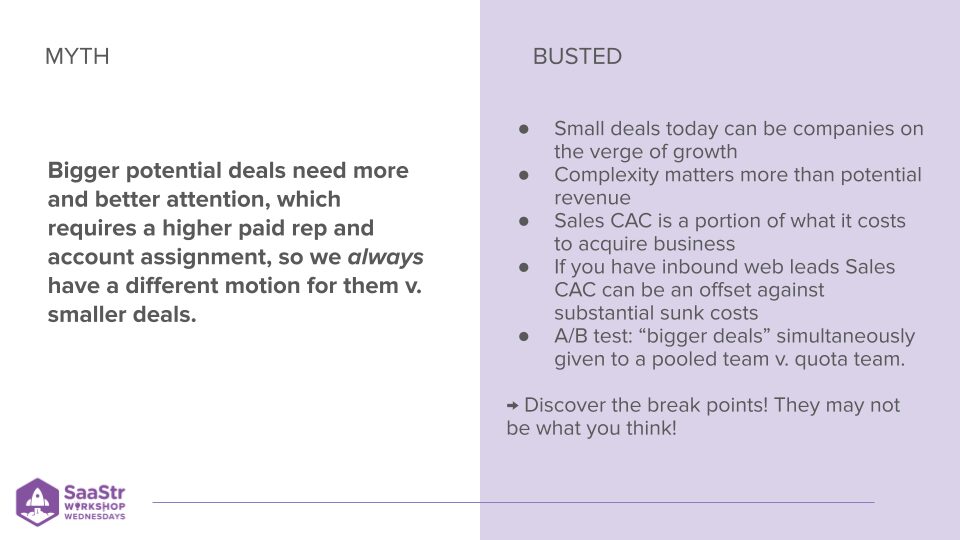Gusto is a high-velocity, high-scale acquisition and expansion engine, and one we can all learn from. In a recent Workshop Wednesday, Tolithia Kornweibel, CRO, and Jamie Edwards, Head of Go-to-Market Operations and Tools, share how Gusto maximizes revenue so that you can do the same.
Together they share the high-velocity techniques they use to maximize sales, including:
- Sell to SMBs
- Use round-robin to assign accounts, but you’re not sure if it’s optimal
- Are stuck in a world of geographic territories
- Spend a lot of time manually building territories
Gusto thinks of the rev ops capability as the brain center and engine builder. Their hope in sharing this model is to help fellow revenue professionals grow their businesses similarly.
A Word You Don’t Often Hear When Building Territories is “Dynamic”
We oftentimes treat our book of business as static — keeping the same reps on certain accounts for as long as possible, and giving them very set terrioties or accounts to work with. While stability isn’t bad, sometimes it can stagnant you.
Making sure you’re putting the right account in front of the right person at the right time requires a more dynamic approach to territory management. To be even more specific, Gusto realized the word “territory” was holding their sales team back. So, instead of dynamic territory books, they moved to just dynamic books.

Today, many SaaS companies still divide up sales accounts in territories by city, country, or region, or round-robin them by rep. But Tolithia and Jamie found that at Gusto, it just wasn’t working to continue working that way.
So, they started saying, “Territories killed rep productivity.”
- Bad territories can reduce revenue by 10%
- 76% of sales teams use geographic territories
- 83% do all territory planning manually
- 64% aren’t satisfied with their territories
If Territories and Round-Robin Aren’t Working, What Does?
As they began Dynamic Account assignments, Gusto began breaking down categories and account criteria and ruled out a few “traditional” sales silos that they released weren’t helping them better segment a sales rep’s book of business. They began to rule out things like:
- Account potential — Didn’t denote what this client is ultimately going to buy
- Industry — great context, but doesn’t tell the business model
- Company or revenue size — Doesn’t mean it’ll fit your engagement model
- Account qualification and engagement — Doesn’t solve for incrementality
- Rep capacity and performance — Doesn’t solve for rep skill
Depending on your business and how your product works this may look a little different, but Dynamic Account assignment should help you establish a new system and process in which a potential customer can work through the sign-up flow without ever having to talk to a salesperson. Or if you’re utilizing a product-led growth model, this works too once you start to inject sales.
What Dynamic Account assignments do is assign performance to the owner of that account. What this did at Gusto was give their sales rep additional context on what actions were already taken by the account (rather than surface information like industry or company size) and before they step in to help improve the value and performance of the account as a whole.
How to Build Dynamic Books

In the chart above, you’ll see a few buckets that help build out dynamic books.
- Prepare reps: Ensure they understand how to attain, what their comp plan looks like, you have the right talent in place, enablement fits, and everything is ready on day one.
- Prepare data: This is about understanding how your data fits the situation and circumstance in which you’re looking to empower teams to go and succeed. You should have the right accounts grouped together in whatever way best fits your needs.
- First assignments: This is crucial, and an opportunity to test you’re theory. But you can’t be married to it. Consider the first assignment the very first date, making sure you get along and are asking the right questions.
- V1 recipes: Codify for how reps engage. You’ll have some folks who are power dialers, so you give them more accounts than those relationship sellers.
- Track everything. If you can, track as much information as you can. Make sure you understand how emails are going out, when they’re going out, what a meeting looks like, etc. Understand how reps are working your accounts.
- Coverage required: Activities are key, but they aren’t everything. Make sure you can show what productivity looks like and what the right production levels are. This is crucial to the final step.
- Dynamic retrieval: This is the part where you get the amount of accounts you can sustain working — never too many or too few.
Let’s go a layer deeper into dynamic retrieval and dynamic assignment.
Dynamic Assignment is the Goldilocks of Assigning Accounts

Dynamic retrieval is all about assigning accounts to folks with the capacity to get to their accounts in a timely manner. You have rep assignment, new rep assignments, and unmanaged accounts.
Unmanaged accounts are usually folks who can go through a flow without talking to a rep, or they’ve filled out a lead form and saw what they needed. Others may get stuck in step two or three of the process, and those accounts are assigned to reps, but carefully. You don’t want to overassign.
As you think about dynamic assignment, think about coverage and production. For your reps, make sure they have the proper amount of coverage for the amount of production they’re providing.
You want to replace any account they’ve gone through. For example, they’ve set up meetings, and it doesn’t feel like the account is going anywhere. Decide if the account is still worth your rep’s time and energy, and if it’s not, it goes through an automated retrieval process, putting them in a holding pen, then to unmanaged accounts.
For new rep assignments, these accounts may fit the strategy for what an owned account looks like. They’re ready and queued up, waiting for a rep. Unmanaged accounts have no coverage, yet they can still reach out for help anytime.
A Real World Example
Say you have two different reps with 70 accounts. Rep 1 can go from 70-90 accounts and had ten retrievals because there was no movement on those accounts. They also onboarded 30 new customers.
Rep 2 has 70 accounts and has worked them, but not in a way that gives any signals to say they’ve overproduced. They may have ten retrievals, too, and ten assignments that move them right back to 70 accounts.
A note of wisdom as you introduce new models — You can never invest too much in change management and helping your reps understand the why and embracing the change.
Next Best Action

There are a lot of inbound leads at Gusto. They arrive on the website and have a team of pulled reps, maybe an SDR, which remains with the customer through the ACV lifecycle if it’s a smaller business. Those folks pick up a lead and work it. All of Gusto’s training and enablement of those reps was through onboarding, classroom training, and coaching them to become good at their job.
To speed that up and apply optimization science, the system prompts the rep to work the lead. The rep has no choice in which lead they work. This is a real-time prompt with how to work the lead and the most important thing to get across to that particular person. Gusto does the traditional version of enablement, but this tool prompting in real-time means reps don’t have to rely on their memory and will have a better customer experience.

One lesson the Gusto team learned is that A/B testing inbound leads, instead of assuming the bigger potential leads or higher lead scores go to assigned leads with quota-carrying reps, they round-robin them to pulled teams that don’t own books of business and can high-velocity optimize.
They were pleasantly surprised with those reps incrementally lifting close rates without sacrificing ACV. Of course, you need a certain amount of volume to be able to A/B test and a shorter sales cycle to quickly see what’s working or not.
3 Takeaways
- There are alternatives to traditional territory assignment or book construction.
- Anything we can all do to help our reps know what to do, when, and how it will increase the velocity of sales and conversion rate over time.
- Question what you think of as traditional breakpoints for sales segments. A lot doesn’t apply in the way we thought it did.

